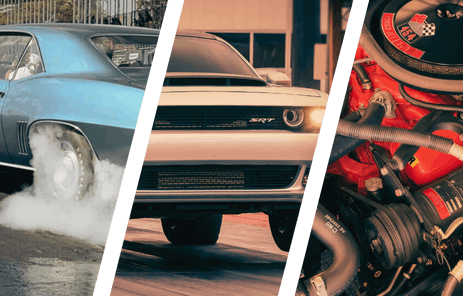
The rise in popularity of Chevy’s C10 pickups has come as no surprise to most hot rodders. For decades the grass roots level hot rodders have worked with vehicles that were plentiful and affordable. From the Deuces to the C10s. We’ve seen this same progression continue through the enthusiast ranks with a couple of other vehicles starting to become the next big trend.
Everyone loves a great long roof and they are still affordable, so station wagons have started to appear at car shows in record numbers. The other vehicle starting to make its presence known is the forgotten square body Chevy trucks. The only problem has been that there really wasn’t a lot of quality support for these trucks. When it came to gauges and instrument panels, there was even less. Classic Instruments has that problem solved for the GM truck fans.

“The biggest problem with the instrument clusters in these years if the number of gauge lenses in the cluster,” said John McLeod, Owner of Classic Instruments. “Each lens has its own angle so the driver can get a better view.” He went on to point out the difficulty in creating an instrument cluster with six different lens angles. Classic Instruments took on the challenge and has come up with a stellar “Direct-Fit Cluster” for the 1973-1987 Sqauare Body trucks. Currently they offer seven different series for the 1/2, 3/4, and 1 ton trucks, Suburbans, and Blazers.
We had McLeod point out some of the features of their new square body truck instrument cluster and he began by showing us the single connection wire harness. “This make the installation much easier,” he said. As mentioned previously, the unique and individualized replacement lens are included in the package.
These clusters also feature LED illumination for gear indicator and in some cases, four-wheel drive mode. The turn signal indicators are in the stock location on these easy to install direct-fit instrument clusters. We were impressed that all of the necessary sending units are included. The fuel sending unit selector switch allows the fuel gage to work with almost any existing fuel sending unit which means a replacement fuel sending unit won’t be needed and is not included.
Weak areas of the original OE instrument clusters have been identified and corrected by the Classic Instruments design. The original units were held together with plastic hardware that gets brittle with age. Pulling these units from a wrecking yard almost always results in these plastic pieces breaking, no matter how gently the removal is. Classic Instruments has replaced that plastic hardware with machined metal hardware pieces designed to outlast the truck.
The Classic Instrument’s team worked to find the perfect color for the back housing that perfectly duplicates the look of the housing. What you don’t see is the original plastic circuit board that was exposed and looked horrible whenever you pulled the cluster out of the dash. Classic Instrument’s new cluster assembly still has a circuit board but it is contained in the housing and cleans up the look of the unit as well as protecting the board.

Now that the square-body truck owners have some style options in their instrument clusters, we can hardly wait to see more of these trucks showing up at the local and national events. For more information on Classic Instruments’ direct-ft Square-Body clusters or any of their other fine products, visit them online at www.classicinstruments.com.
You might also like
World's Quickest All-Motor Small-Block Street Machine Blisters Drag Week
Records are set at sanctioned events under close scrutiny. The rest are just empty claims — fodder for social media.




